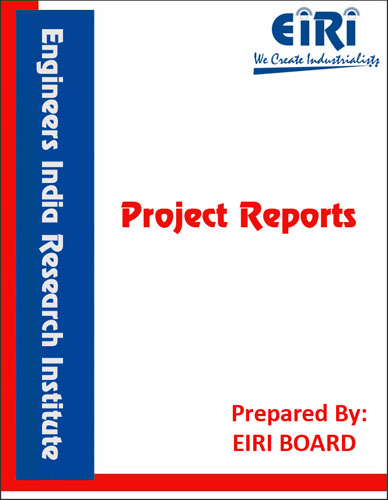KATTHA FROM CASHEW HUSK
The project report includes Present Market Position and Expected Future Demand, Market Size, Statistics, Trends, SWOT Analysis and Forecasts. Report provides a comprehensive analysis from industry covering detailed reporting and evaluates the position of the industry by providing insights to the SWOT analysis of the industry.
We can prepare PROJECT REPORT as per your INVESTMENT PLAN for BANK LOAN REQUIREMENT and INDUSTRY ANALYSIS. All reports are prepared by highly qualified consultants and verified by a panel of experts.
Have Query? Click Here to Chat
Industry Expert is Online, Chat with him for more detail.

Katha is obtained mostly by crystallization in cold from the water extractives of the heartwood of Acacia catechu Willd., fam. Leguminosae commonly known as KHAIR tree, which is widely distributed in India, from the north-west plains to eastwards in Assam and throughout the country, particularly in the deciduous and drier regions. The other species namely, A. chundra Willd and A. catechuoides of KATTHA is carried out both, as a cottage scale industry in and around the organized sector. The general principle of extraction of the heartwood and of consequent separation of KATTHA ( containing most of catechin) from cutch (Principally catechu-tannic acid) is the same in cottage sector as well as large scale units. In the conventional process of KATTHA manufacture followed by cottage sector of the industry, during separation of the crystalline KATTHA, the soluble cutchtans, a valuable by-product are neither effectively removed nor recovered, except by a few.
KATTHA is one of the principal ingredients used in the preparation of PAN from betel leaves, for chewing purposes when, in combination with lime, it gives the characteristic red coloration. In Ayruvedic and Unani systems of medicine, KATTHA is used as astringent; cooling and digestive; useful in relaxed conditions of throat, mouth and gums; and also in cough and diarrhoca. Externally, it is employed as an astringent and as a cooling application to ulcers, boils and cruptions of the skin.
A rational specification for KATTHA, fair both to manufacturers as well as consumers, should take into account its main constituent, namely, the catechin. Unfortunately, the specifications laid down so far in the Prevention of Food Adulteration ( PFA ) Rules, 1955, Ministry of Health and Family Planning, Government of India have overlooked this very important aspect. This has given rise to anomalous position. Consequently the Central Committee for Food Standards ( CCFS) requested BIS to under take the task of evolving rational standards for KATTHA. An Indian Standard specification ( IS: 2962-1964*) formulated as a result of collaborative testing over a number of years paved the foundation for testing. It is hope that specification will be adopted shortly by the CCFS for the purposes of the PFA Rules, 1955.
This specification has been formulated on the basis of collaborative tests carried out on a large number of samples of KATTHA, obtained from the cottage sector as well as large scale manufacturers, in the laboratories of Central Food Technological Research Institute (CFTRI), Mysore; Italab Private Ltd. Bombay; The public Analyst, Government of Uttar Pradesh, Lucknow; Central Drugs Laboratory, Calcutta; and the Indian Standards Institution. The co-operation received from them is gratefully acknowledged. The Limits for poisonous metals are the same as specified in the PFA Rules, 1955, Ministry of Health & Family Planning Government of India.
INTRODUCTION
PROPERTIES
SPECIFICATION OF CASHEW HUSK
B.I.S. SPECIFICATION
SAMPLING
USES
OVERVIEW OF CASHEW HUSK IN VIETNAM
MARKET SURVEY
IMPORT DATA OF KATHA
EXPORT DATA OF KATHA
IMPORT DATA OF CASHEW HUSK
MANUFACTURING PROCESS OF KATHA FROM CASHEW HUSK
PROCESS FLOW DIAGRAM
PRINCIPLES OF PLANT LAYOUT
PLANT LOCATION FACTORS
EXPLANATION OF TERMS USED IN THE PROJECT REPORT
PROJECT IMPLEMENTATION SCHEDULES
SUPPLIERS OF RAW MATERIALS
SUPPLIERS OF PLANT AND MACHINERY
PLANT LAYOUT
APPENDIX – A :
1. COST OF PLANT ECONOMICS
2. LAND & BUILDING
3. PLANT AND MACHINERY
4. FIXED CAPITAL INVESTMENT
5. RAW MATERIAL
6. SALARY AND WAGES
7. UTILITIES AND OVERHEADS
8. TOTAL WORKING CAPITAL
9. COST OF PRODUCTION
10. PROFITABILITY ANALYSIS
11. BREAK EVEN POINT
12. RESOURCES OF FINANCE
13. INTEREST CHART
14. DEPRECIATION CHART
15. CASH FLOW STATEMENT
16. PROJECTED BALANCE SHEET



